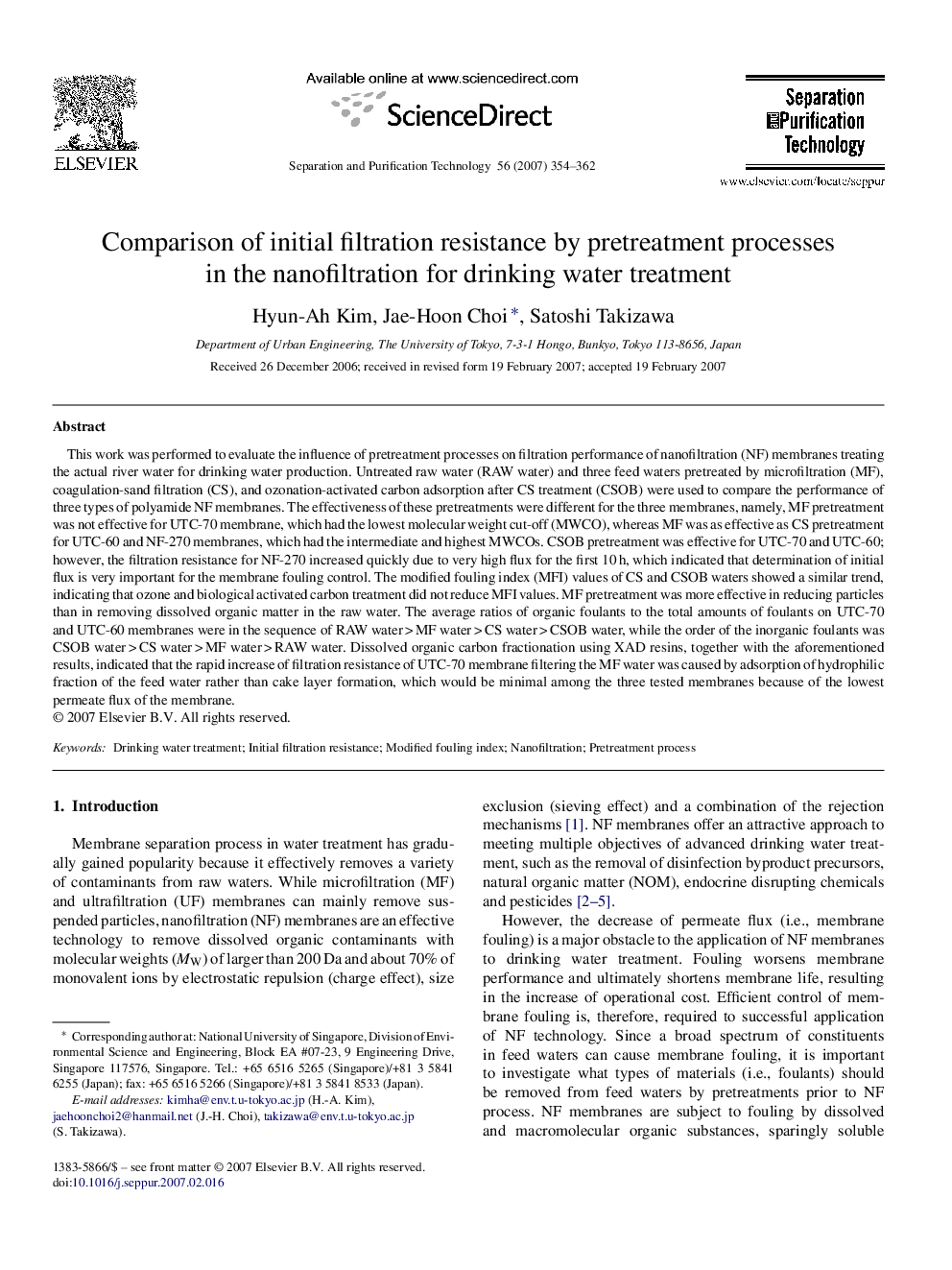| Article ID | Journal | Published Year | Pages | File Type |
|---|---|---|---|---|
| 643981 | Separation and Purification Technology | 2007 | 9 Pages |
This work was performed to evaluate the influence of pretreatment processes on filtration performance of nanofiltration (NF) membranes treating the actual river water for drinking water production. Untreated raw water (RAW water) and three feed waters pretreated by microfiltration (MF), coagulation-sand filtration (CS), and ozonation-activated carbon adsorption after CS treatment (CSOB) were used to compare the performance of three types of polyamide NF membranes. The effectiveness of these pretreatments were different for the three membranes, namely, MF pretreatment was not effective for UTC-70 membrane, which had the lowest molecular weight cut-off (MWCO), whereas MF was as effective as CS pretreatment for UTC-60 and NF-270 membranes, which had the intermediate and highest MWCOs. CSOB pretreatment was effective for UTC-70 and UTC-60; however, the filtration resistance for NF-270 increased quickly due to very high flux for the first 10 h, which indicated that determination of initial flux is very important for the membrane fouling control. The modified fouling index (MFI) values of CS and CSOB waters showed a similar trend, indicating that ozone and biological activated carbon treatment did not reduce MFI values. MF pretreatment was more effective in reducing particles than in removing dissolved organic matter in the raw water. The average ratios of organic foulants to the total amounts of foulants on UTC-70 and UTC-60 membranes were in the sequence of RAW water > MF water > CS water > CSOB water, while the order of the inorganic foulants was CSOB water > CS water > MF water > RAW water. Dissolved organic carbon fractionation using XAD resins, together with the aforementioned results, indicated that the rapid increase of filtration resistance of UTC-70 membrane filtering the MF water was caused by adsorption of hydrophilic fraction of the feed water rather than cake layer formation, which would be minimal among the three tested membranes because of the lowest permeate flux of the membrane.
